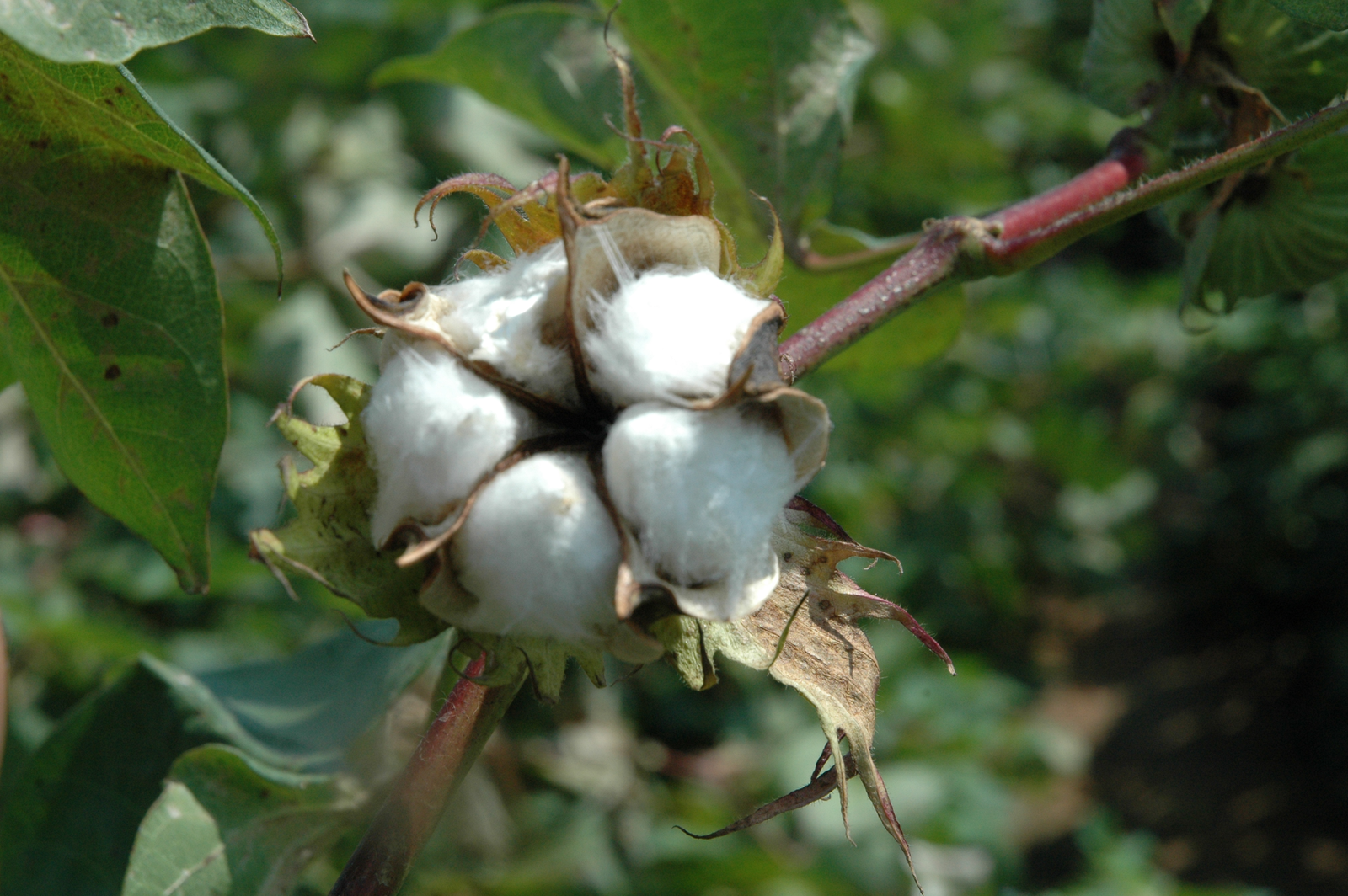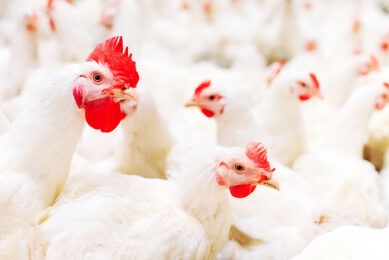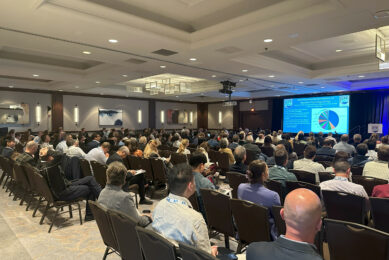Use of cottonseed beyond ruminant feed

Cottonseed could be a good source of vegetable protein, but only ruminant animals can tolerate gossypol, the phenolic toxin found in pigment glands located in the seeds, leaves, branches, and roots. Traditionally bred glandless cotton failed in the marketplace because without the protection of gossypol, insects ate the plants.
By Catherine Watkins
Processing, quality control, and marketing issues worked against the successful commercialisation of cotton. Researchers at Texas A&M University have used RNAi technology to bioengineer cotton lines that exhibit ultra-low gossypol content in the seeds and normal levels elsewhere. Has the gossypol problem in cottonseed finally been solved?
Twenty million farmers in 80 countries grow cotton each year for its fibre. They produce enough cottonseed – a good source of plant protein at about 22.5% by weight – to meet the daily protein requirements of half a billion people per year.
There’s just one catch: Only ruminants can tolerate cottonseed meal because it contains gossypol, a phenolic toxin found scattered throughout the seed, leaves, stems, and roots of the cotton plant in structures known as pigment glands. Gossypol glands serve a purpose, because the toxin protects the plant from insects and microbes. How to remove the gossypol has been the challenge – either through processing, traditional plant breeding, or bioengineering – without compromising the vigour of the plant or the quality and quantity of the fibre and by-products such as meal.
“We’ve been chasing this rabbit for 50 to 60 years,” says Tom Wedegaertner of Cotton Incorporated in North Carolina, USA. As director of cottonseed research and marketing since 1993, Wedegaertner has had a front row seat from which to observe the many and varied attempts to commercialise traditionally bred glandless (gossypol-free) cotton and to create a bioengineered plant with seeds that are free of gossypol.
Could the rabbit finally be in sight? Wedegaertner thinks so, suggesting that the US industry is 6–10 years away from planting a million acres of ultra-low-gossypol biotech cotton. The road from initial characterisation of mutant gossypol-free cotton to a new bioengineered variety is a fascinating story of persistence, with an end yet to be written. But if Wedegaertner is right – and if a commercial partner takes up the cause – the developing world will gain another protein source even as growers and processors gain added value.
Biotechnology to the rescue
Various institutions including in the USA, Australia, and China have looked to bioengineering to transform the cotton plant ever since a gossypol free mutant cotton strain was identified in the 1950s. An ongoing research conducted by Keerti S. Rathore at TAMU and funded by Cotton Incorporated gave a challenge that cotton is a difficult plant to transform, requires a high degree of tissue culture skills, and involves “two distinct and equally important steps,” in Rathore’s words.
The first step entails transfer and stable integration of the transgene into the plant genome. The second step involves the recovery of a transgenic plant from the stably transformed cell. In light of the difficulties involved in transforming cotton, Rathore’s team focused on Agrobacterium-mediated transformation of cotton because it does not require specialised equipment, is relatively inexpensive, and is more likely to result in single-copy transgenic events.
The team thought at first that antisense technology would work. “The idea was to silence the gene that codes for the enzyme involved in the biosynthesis of gossypol- δ-cadinene synthase – in a seed-specific manner. We didn’t want to mess with gossypol and related terpenoids in other parts of the plant in order to keep their protective qualities.” He did manage to generate a number of transgenic cotton plants with the correct silencing construct that exhibited low gossypol content in the seeds and normal levels elsewhere. “Things looked promising in the first generation,” he says. “However, most of the low-gossypol lines lost the trait in the next generation.” And so the TAMU researchers set the project aside in 2001–2002 because of lack of funding, even though they wanted to see if the new technique of RNA interference (RNAi) could solve the problem of heritability.
Work began again around 2003 using RNAi technology, and towards the end of 2005, the group had their first glimpse of a positive result. They saw some lines with ultra-low gossypol levels in the seed and confirmed the trait through to the second and third generations. “The important thing was that the aerial parts and roots had the same levels of protective gossypol and related terpenoids as the parent plant,” notes Rathore.
The TAMU team’s RNAi work in 2006 detailed the results from three lines of transgenic plants grown in the greenhouse that showed seed specificity for the gene silencing. Since then Rathore has taken nine different lines through five generations in the greenhouse and found that the trait was stable. The seed-specific silencing occurs because of the DNA sequence of the promoter used, so his team isolated from cotton itself. Loosely, a promoter is localised before the coding DNA sequence for the actual protein that, when transcribed, produces an enzyme or other protein.
“The promoter determines whether the gene is expressed in the seed, root, or elsewhere,” he says. “If we didn’t have this promoter, which normally controls the gene for the seed protein α-globulin in cotton, we probably would not have had this success. The seed promoter and RNAi got the result.”
Along with the stability testing, the group had also proven that young seedlings were capable of launching a gossypol-mediated defence response when challenged with a mould pathogen.
Two RNAi lines were tested from 2009 to 2011 in the field and were stable under field conditions, without any loss of fibre or seed quantity and quality.
With the exception of the ultra-low level of gossypol – at 200–250 ppm – the other constituents are similar, with one significant difference. That difference bodes well for eventual commercialisation: The team has seen consistently higher levels of oil in the transgenic seeds, and statistical analysis shows the differences are significant. “This makes sense,” he says, “Gossypol constitutes almost 1% of the seed by weight. By knocking that back by 98–99%, resources apparently are diverted back into making oil.”
Next steps
Rathore and Cotton Incorporated are committed to pushing the project forward. Toward that end, Rathore hopes to conduct multi-location field trials and, eventually, feeding studies. Another question that needs work is whether the gene construct can be moved into a commercial variety. Further, researchers at TAMU are investigating using meal from the transgenic lines for aquaculture, particularly in shrimp.
Which raises an interesting point about protein from cottonseed meal. As it stands, the only mammals benefitting from cottonseed protein – either as whole seed or as meal after oil extraction – are cows, since only ruminants can tolerate gossypol.
Cows are not the most efficient animals at converting feed to animal protein. It takes 5.8 pounds of feed to produce a pound of beef. Pigs are more efficient, with a feed-conversion ratio of 3.3 and chickens even more so at 2.1; some fish have a conversion factor that is close to 1. With a view on a limited supply of feed, it makes more sense to feed it to chickens or fish than to cows.
What is needed now is a commercial partner that will move the trait into an established variety. “The big three seed companies all agree that this technology will provide added value for growers and ginners, but they haven’t figured out how they can capture enough profit to move forward,” explains Wedegaertner.
The big three seed companies in cotton are Bayer CropScience, Dow AgroSciences, and Monsanto. Bayer is working with researchers in New Mexico (see box), where insect pressure on cotton is less than elsewhere, on traditionally bred glandless cotton. Spokespersons for both Monsanto and Dow confirmed that glandless or low-gossypol cotton varieties are not in their product pipelines at this time. Based on recent publications, work continues in Australia and China – the largest cotton producer – on transgenic low-gossypol cotton.
“Key to all of this,” says Wedegaertner, “is the regulatory registration process for the TAMU transgenic cotton. It is clear from laboratory tests that what the TAMU team is doing with RNAi technology is simply mimicking what naturally occurs in mutant varieties. That is the reason we think regulatory approval will not be as time-consuming or expensive as with some other transgenic crops. And once it is registered, the seed companies may show more interest.”
Wedegaertner is nothing if not optimistic about bioengineered ultra-low-gossypol cottonseed: “I expect it to be commercialised during my lifetime,” he says, firmly. Just don’t ask him, as jokers sometimes do, how long he plans to live.
AAF Volume 21 No. 5
An extract reprinted
with permission from the May 2013 issue of Inform
magazine, published by AOCS.
Glandless cottonseed meal for shrimp feed and human consumption
New crop market dynamics are a familiar story: Food companies will not develop a new product using an ingredient that does not have a stable supply.
A multidisciplinary team of researchers at New Mexico State University (NMSU) in Las Cruces, USA, have been working for several years – funded by Cotton Incorporated – to develop a cycle of use for traditionally bred glandless cotton and to conduct field evaluations of insect susceptibility. Their product development work also stands to benefit the ultra-low-gossypol transgenic cotton developed at Texas A&M University. NMSU
scientists set up a pilot plant where, after harvesting, delinting, and dehulling, they press the oil and make
different cottonseed meals and flours for testing new products. The campus foodservice company uses the oil for frying. It is then recycled into biodiesel, which runs a utility vehicle on the farm. Leftover glycerine goes into bar soap.
Of all the applications NMSU has tested, one of the most promising potential markets for glandless cottonseed meal (G-CSM) is in shrimp feed. “We reduced the cost of shrimp meal by almost half,” says Tracey Carrillo,
assistant director of Campus Farm Operations and superintendent of the Leyendecker Plant Science Research Center at NMSU. “We could take it even further down by adding algae in place of commercial fishmeal.” NMSU food technologists have developed snack foods using G-CSM, Carrillo notes, including an extruded product made of corn flour and G-CSM known as Chiletones. Cookies are next on the product development list,
he said.
Research also continues at two US Department of Agriculture (USDA) Agriculture Research Service (ARS) centers to produce and characterise glandless cottonseed protein concentrates and isolates (70% and 90% protein, respectively). “We are looking at the functional properties with the thought that the concentrates and isolates may have some unique applications,” explains Michael Dowd, a chemical engineer at the USDA-ARS Southern Regional Research Center in New Orleans, Louisiana.
Dowd is collaborating with Mila P. Hojilla-Evangelista,
a research chemist with the Plant Polymer Research
Unit of the USDA-ARS National Center for Agricultural Utilization Research in Peoria, Illinois. They are
comparing some of the chemical and functional
properties of the protein isolates Dowd has produced from both glanded and glandless cottonseed.
“We determined the protein samples’ solubility in
aqueous media at various pH, foaming properties,
emulsification properties, water absorption, and
sensitivity to heating,” explains Hojilla-Evangelista. Both protein isolates (glanded and glandless) have similar
solubility profiles and are “strikingly most soluble at
very acidic pH.”
“At the acidic condition (pH 2) we detected the greatest amounts of soluble cottonseed protein. The emulsification properties and water absorption were again similar; both protein isolates were excellent emulsifiers and formed moderately stable emulsions. The foaming
properties are where we observed notable differences: Glandless cottonseed protein isolate (CPI) had higher foaming capacity and far more stable foams than the protein from glanded cottonseed.”
When comparing the CPI to soybean protein isolates (SPI), Hojilla-Evangelista found that the CPI are markedly more soluble than SPI at pH 2, so the CPI have a
potential market in applications with acidic pH. “CPI
also appear to be better emulsifiers than SPI, and
foaming capacity and stability of the glandless CPI are
comparable to those of SPI,” she said. “The CPI then could be viable alternatives to SPI for foaming and emulsifying uses.”
Given these characteristics, Hojilla-Evangelista suggested a broad range of product development possibilities for CPI. The need for high solubility in very low pH applications would include high-protein fruit juices, sports drinks, possibly carbonated drinks, or tomato-based pasta sauces. CPI’s foaming properties could lead to its use in whipped toppings, desserts, or baked products. Its emulsifying ability would be useful for sausages and similar comminuted meat products, confectionery
products, dairy products, sauces and soups.











